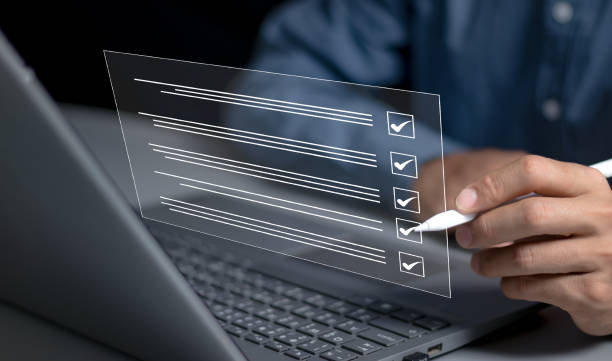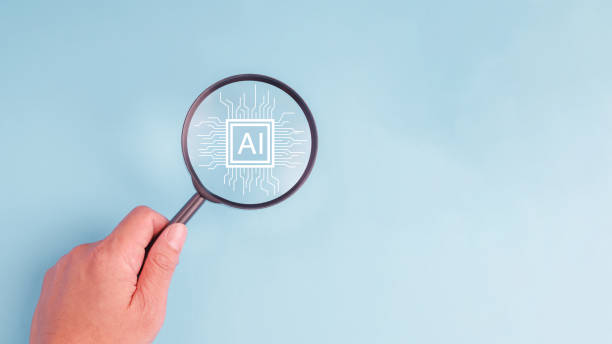What is On-Page SEO and Why Does It Matter?
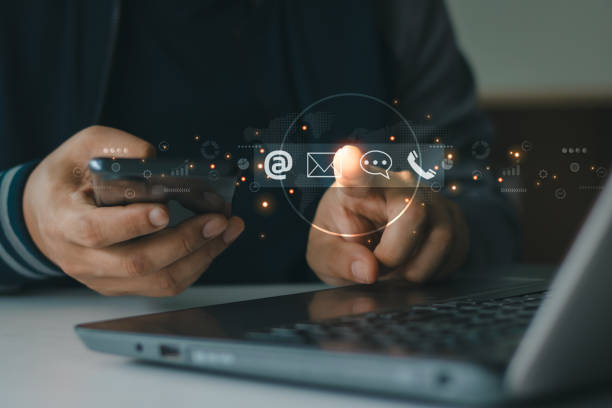
On-Page SEO is a set of actions performed within your website to improve your site’s ranking in search engines like Google.
These actions include optimizing content, site structure, HTML tags, and other internal elements of the website.
The importance of On-Page SEO lies in the fact that it helps search engines better understand the topic and content of your site’s pages.
When search engines can properly recognize your content, the likelihood of them showing your site higher in search results increases.
This, in turn, leads to increased organic traffic, attracting the target audience, and ultimately improving your business.
#Keywords, #PageTitle, and #MetaDescriptions are among the most important elements of On-Page SEO.
In other words, On-Page SEO is a fundamental foundation for success in SEO.
Without strong On-Page SEO, your efforts in #OffPageSEO and content marketing will not be effective enough.
On-Page SEO actually shows search engines that your site is worth ranking and that its content is useful to users.
This is where the importance of On-Page SEO becomes clear.
On-Page SEO strategies include producing high-quality and relevant content, optimizing title and meta description tags, improving URL structure, using internal and external links, and optimizing images.
Also, ensuring high site loading speed and responsive design are also important factors in On-Page SEO.
By following these tips, you can optimize your website for search engines and improve its ranking in search results.
Are you tired of your company’s website not meeting your expectations? With Rasaweb, design a professional website that showcases the true face of your business.
✅ Increase the attraction of new customers and sales leads
✅ Increase the credibility and trust of your brand among the audience
⚡ Get free website design consultation!
Keyword Research; The First Step in On-Page SEO

Keyword research is the cornerstone of any successful On-Page SEO strategy.
Before taking any action to optimize your site, you need to know what words your audience is searching for in search engines.
Finding the right keywords helps you create content that accurately meets users’ needs and attracts targeted traffic to your site.
To start keyword research, you can use various tools such as Ahrefs Keywords Explorer, Ubersuggest, KeywordTool.io and Google Keyword Planner.
These tools help you find keywords related to your business topic, check their search volume, and assess the level of competition for them.
When choosing keywords, look for words that have a decent search volume and at the same time are not too highly competitive.
Also, pay attention to the relevance of the keywords to your site’s content.
The selected keywords should be naturally incorporated into your content and should not impair the readability of the text.
Overuse of keywords (keyword stuffing) not only does not help your site’s SEO, but may also result in your site being penalized by Google.
On-Page SEO starts with keyword research.
Also, look for long-tail keywords.
These keywords usually have a lower search volume, but are more targeted and have less competition.
Using long-tail keywords helps you attract higher quality traffic to your site.
Keep in mind that On-Page SEO is only possible with the use of relevant and valuable keywords.
Be careful in choosing keywords to optimize On-Page SEO.
Optimizing Page Title and Meta Description

The Title tag and Meta description are two important elements in On-Page SEO that are displayed in search results.
These two elements play an important role in attracting users to your site and can significantly increase the click-through rate (CTR).
The page title should be concise and accurate and clearly state the topic of the page.
The page title should include the main keyword of the page and its length should not exceed 60 characters.
A good page title is both attractive to users and helps search engines better understand the topic of the page.
For example, the page title could be “Comprehensive Guide to On-Page SEO”.
The meta description should also be concise and engaging, encouraging users to click on your site’s link.
The meta description should include the main keyword of the page as well as additional information about the content of the page.
The meta description length should not exceed 160 characters.
A good meta description shows users that your site meets their needs.
On-Page SEO, by optimizing these two important elements, can have a significant impact on your site’s ranking.
The table below provides tips for optimizing page title and meta descriptions
| Element | Optimization Tips |
|---|---|
| Page Title | Include the main keyword, be concise and accurate, length should be less than 60 characters |
| Meta Description | Include the main keyword, be engaging and persuasive, length should be less than 160 characters |
Also, remember that in On-Page SEO the title and meta description must be unique and a different title must be chosen for each page of the site, appropriate to the content of that page.
Copying the title and meta description from other pages of the site can have a negative impact on your site’s SEO.
Content Optimization; The King of On-Page SEO

Content is the king of On-Page SEO.
Producing high-quality, valuable, and relevant content is the most important factor in attracting organic traffic and improving your site’s ranking in search engines.
Your content should answer users’ questions and needs and encourage them to stay on your site.
A website with good content can be SEO’d, while a website with good coding and bad content cannot.
When producing content, pay attention to the following:
- Keyword Research: Before writing content, find keywords related to your topic and use them naturally in your text.
- Suitable Structure: Divide your content into smaller sections and use headings and subheadings to organize the text.
- Readability: Use short and fluent sentences and avoid using complex and technical words.
- Added Value: Your content should be valuable to users and provide new and useful information.
- Update: Update your content regularly so that the information is always current.
On-Page SEO, by producing high-quality and valuable content, can significantly increase your site’s organic traffic.
Also, quality content can help you establish your credibility and expertise in your field.
On-Page SEO has a great impact on increasing site traffic.
Keep in mind that your content should be written for users, not for search engines.
If your content is useful and attractive to users, search engines will also reward it.
On-Page SEO requires a balance between optimizing for search engines and providing quality content for users.
Does your company’s website perform as it deserves your brand? In today’s competitive world, your website is your most important online tool. Rasaweb, a specialist in designing professional corporate websites, helps you to:
✅ Gain credibility and customer trust
✅ Convert website visitors into customers
⚡ Get a free consultation!
Image Optimization

Images play an important role in the visual appeal and user experience of your site.
But unoptimized images can slow down your site loading speed and negatively impact On-Page SEO.
Image optimization means reducing the file size of images without sacrificing quality and using SEO features to help search engines understand the content of the images.
To optimize images, pay attention to the following:
- Choose the right format: Use JPEG format for images with lots of colors and PNG format for images with graphics and text.
- Reduce file size: Use image compression tools to reduce the file size of images without sacrificing quality.
- Use a suitable file name: Choose file names for images with keywords related to the image content.
- Alt Tag: Write an Alt tag for each image that briefly describes the content of the image.
The Alt tag helps search engines understand the content of the image and is also useful for users who cannot see the images.
Image optimization not only helps improve your site’s On-Page SEO, but also improves your site’s user experience.
Optimized images make your site load faster and users enjoy visiting your site.
Image optimization is one of the important principles of On-Page SEO.
On-Page SEO requires attention to detail and image optimization is one of these important details.
In On-Page SEO, the use of high-quality images is very important.
High-quality images cause users to stay on your site longer and interact more with your content.
Therefore, try to use high-quality images that are relevant to your content and optimize them correctly.
Optimal URL Structure
![]()
The URL structure is one of the important factors in On-Page SEO that helps search engines and users better understand the topic and content of your site’s pages.
An optimal URL structure should be short, readable, and include keywords related to the content of the page.
To create an optimal URL structure, pay attention to the following:
- Short and readable: URLs should be as short and readable as possible.
Avoid using uppercase letters, numbers, and unnecessary punctuation marks. - Use of keywords: URLs should include keywords related to the content of the page.
This helps search engines better understand the topic of the page. - Hierarchical Structure: URLs should have a hierarchical structure and show where the desired page is located on the site.
- Use of hyphens: Use a hyphen (-) to separate words in URLs.
- Avoid Parameters: Avoid using parameters in URLs.
Parameters usually make URLs long and complicated.
An optimal URL structure not only helps improve your site’s On-Page SEO, but also improves your site’s user experience.
Short and readable URLs help users easily find the pages they want and assure them that they are on the right page.
A good URL structure is necessary for On-Page SEO.
On-Page SEO requires attention to all the details and the URL structure is one of these important details.
By following the tips mentioned, you can optimize your site’s URL structure and improve your site’s ranking in search engines.
On-Page SEO improves user experience and increases site ranking.
Internal and External Linking
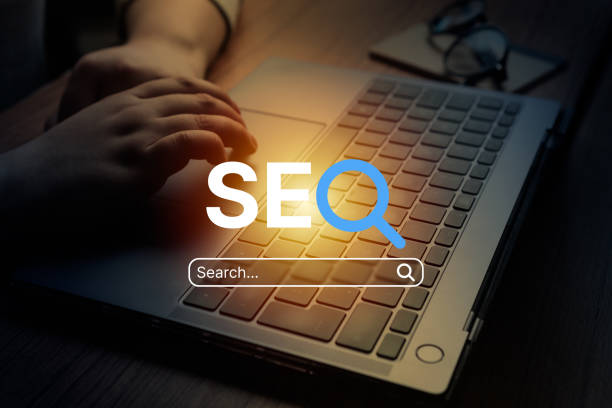
Internal and external linking are two important strategies in On-Page SEO that help search engines better understand the structure and content of your site and help users easily navigate your site and find the information they need.
Internal Linking: Means creating links between different pages of your site.
Internal linking helps search engines find the important pages of your site and give them a better ranking.
Also, internal linking helps users easily navigate your site and find the information they need.
Another advantage of internal linking is improving On-Page SEO.
External Linking: Means getting links from other sites to your site.
External linking shows search engines that your site is credible and valuable and deserves ranking.
Also, external linking can increase your site’s organic traffic.
Internal and external linking helps improve site SEO.
The table below provides tips for internal and external linking:
| Linking Type | Optimization Tips |
|---|---|
| Internal Linking | Using relevant anchor texts, linking to important pages of the site, using nofollow links if needed |
| External Linking | Receiving links from credible and relevant sites, using relevant anchor texts, diversity in link sources |
In On-Page SEO, internal and external linking should be done naturally and avoid buying links or using unethical linking methods.
Using unethical linking methods can result in your site being penalized by Google.
On-Page SEO requires patience and perseverance and should be done continuously and consistently.
Site Loading Speed; An Important Factor in SEO

Site loading speed is one of the important factors in On-Page SEO that directly affects user experience and your site’s ranking in search engines.
Users who experience slow site loading speeds usually leave the site and go to other sites.
Also, Google gives a lower ranking to sites that have a slow loading speed.
To improve site loading speed, pay attention to the following:
- Image Optimization: Unoptimized images can consume a lot of bandwidth and slow down site loading speed.
- Use of CDN: Using a CDN (Content Delivery Network) helps you store your site’s content on different servers around the world and provide users with the closest server.
- Reduce the number of HTTP requests: Each time a browser loads a web page, it has to send many HTTP requests to the server.
Reducing the number of HTTP requests can improve site loading speed. - Enable Gzip compression: Gzip compression helps you reduce the size of your site’s files and improve site loading speed.
- Using Cache: Using cache helps you store your site’s content in the user’s browser memory and your site will load faster on subsequent visits.
On-Page SEO, by improving site loading speed, can improve your site’s user experience and increase your site’s ranking in search engines.
Improving site speed is effective in SEO.
On-Page SEO requires attention to all aspects of the site and site loading speed is also one of these important aspects.
By following the tips mentioned, you can improve your site loading speed and benefit from its advantages.
Do you have an online store but your sales are not as expected? Rasaweb solves your problem forever by designing professional online store websites!
✅ A significant increase in conversion rate and sales
✅ Unparalleled user experience for your customers
⚡ Click to get a free consultation with Rasaweb!
Responsive Design; Mandatory for Mobile SEO

With the increasing use of mobile devices to search the internet, responsive design has become a necessity for On-Page SEO.
Responsive design means designing a site that automatically adapts to the screen size of different devices.
This means that your site will be displayed well on mobile phones, tablets, and desktop computers and users will have a good user experience.
Google gives a better ranking to sites that have responsive design.
Therefore, if you want to rank well in mobile search results, you must use responsive design.
Responsive design is necessary for SEO.
To make sure that your site has a responsive design, you can use the Google Mobile-Friendly Test tool.
This tool will show you whether your site is displayed well on mobile devices or not.
On-Page SEO with responsive design, can improve your site’s user experience on mobile devices and increase your site’s ranking in mobile search results.
Responsive design is necessary for mobile SEO.
On-Page SEO requires attention to all aspects of the site and responsive design is also one of these important aspects.
By using responsive design, you can optimize your site for mobile users and benefit from its advantages.
On-Page SEO improves user experience and increases site ranking.
Website Updates and Maintenance
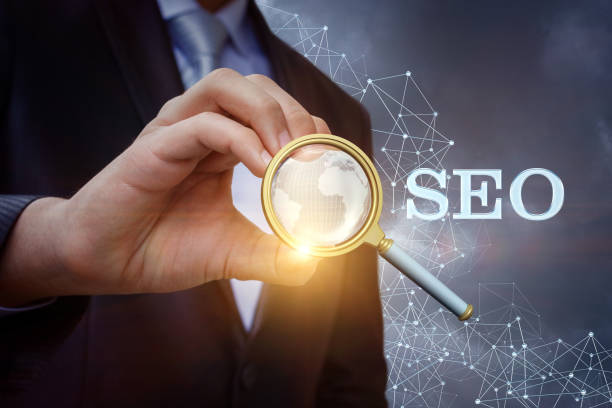
On-Page SEO is a continuous process and requires constant updates and maintenance.
Search engines are constantly changing their algorithms and sites that do not adapt to these changes lose their ranking.
Therefore, to maintain your site’s ranking in search engines, you must regularly update and maintain your site.
Website update and maintenance includes the following:
- Content Update: Update your site’s content regularly and add new and актуально information to it.
- Check and fix errors: Check your site regularly and fix any errors.
- Speed Optimization: Constantly check your site’s loading speed and improve it if necessary.
- Check Links: Regularly check the internal and external links of your site and remove or correct broken links.
On-Page SEO with website updates and maintenance, can maintain your site’s ranking in search engines and prevent it from decreasing.
Website maintenance is important in On-Page SEO.
On-Page SEO requires commitment and perseverance and must be done continuously and consistently.
By updating and maintaining your site, you can benefit from the advantages of SEO and increase your site’s organic traffic.
Frequently Asked Questions
| Question | Answer |
|---|---|
| What is On-Page SEO? | It refers to a set of actions that are performed within a website to improve its ranking in search engines. |
| Why is On-Page SEO important? | Because it helps search engines better understand the content and structure of your site and improves user experience. |
| What are the most important elements of On-Page SEO? | Title and meta descriptions, keywords, URL structure, high-quality content, image optimization, internal linking, and site speed. |
| How do we optimize the Title Tag and Meta Description? | The title should include the main keyword and be engaging, and the meta description should be a persuasive summary of the content with relevant keywords. |
| What is the role of keywords in On-Page SEO? | Keywords help search engines understand what the page content is about and should be used naturally and intelligently in the text. |
| How is image optimization done for On-Page SEO? | By compressing the size, using a descriptive file name, and filling in the Alt tag with relevant descriptions and keywords. |
| What is Internal Linking and what is its use? | Connecting different pages of the site to each other. This helps distribute the authority of pages (Page Authority) and improve the crawling of search engines. |
| What is the importance of site loading speed in On-Page SEO? | High speed improves user experience and is one of the important ranking factors for search engines like Google. |
| What effect does Mobile-Friendliness of the site have on On-Page SEO? | Given the increase in mobile users, being responsive is essential for providing a good user experience on all devices and Google’s mobile-first indexing priority. |
| What are the important factors related to content in On-Page SEO? | Originality, quality, comprehensiveness, readability, proper use of headings (H1, H2,…) and regular content updates. |
and other advertising agency services in the field of advertising
Smart custom software: Transform your site traffic increase with the help of intelligent data analysis.
Intelligent data analysis: A dedicated service for increasing site traffic growth based on marketing automation.
Smart UI/UX: Designed for businesses looking to increase click-through rates through marketing automation.
Smart Google Ads: A professional solution to improve SEO ranking by focusing on marketing automation.
Smart website development: A new service to increase sales through marketing automation.
And more than hundreds of other services in the field of internet advertising, advertising consulting and organizational solutions
Internet Advertising | Advertising Strategy | Advertorial
Resources
Inbound Marketing
,SEO Training at Moz
,On-Page SEO at Ahrefs
,SEO Guide at Search Engine Land
? Do you dream of your business being seen in the online world? Rasaweb Afarin Digital Marketing Agency offers innovative and comprehensive solutions, from custom website design and professional optimization to campaign management, taking you to the top. Build your digital future with us.
📍 Tehran, Mirdamad Street, next to the Central Bank, South Kazerun Alley, Ramin Alley No. 6
“`

